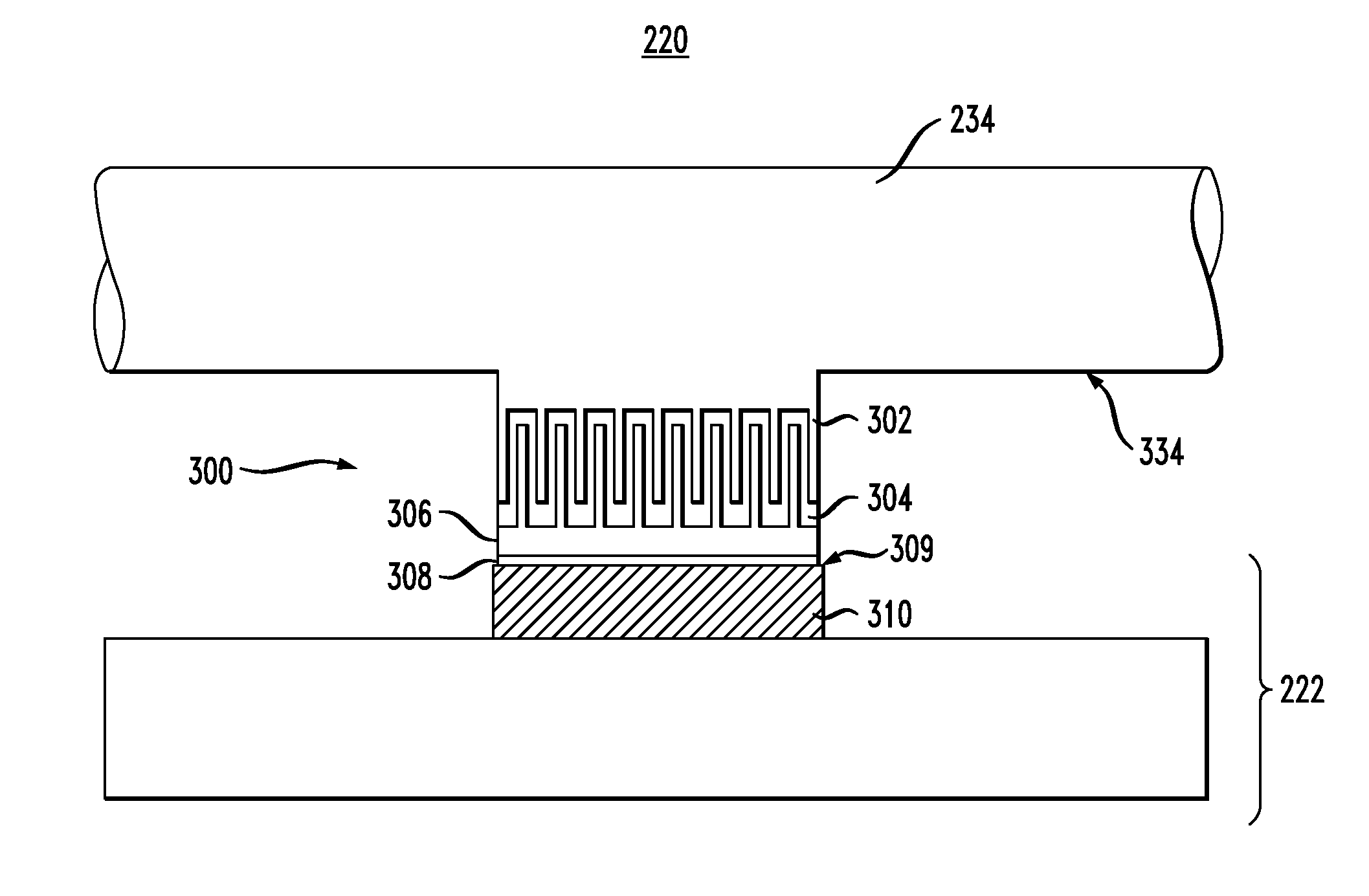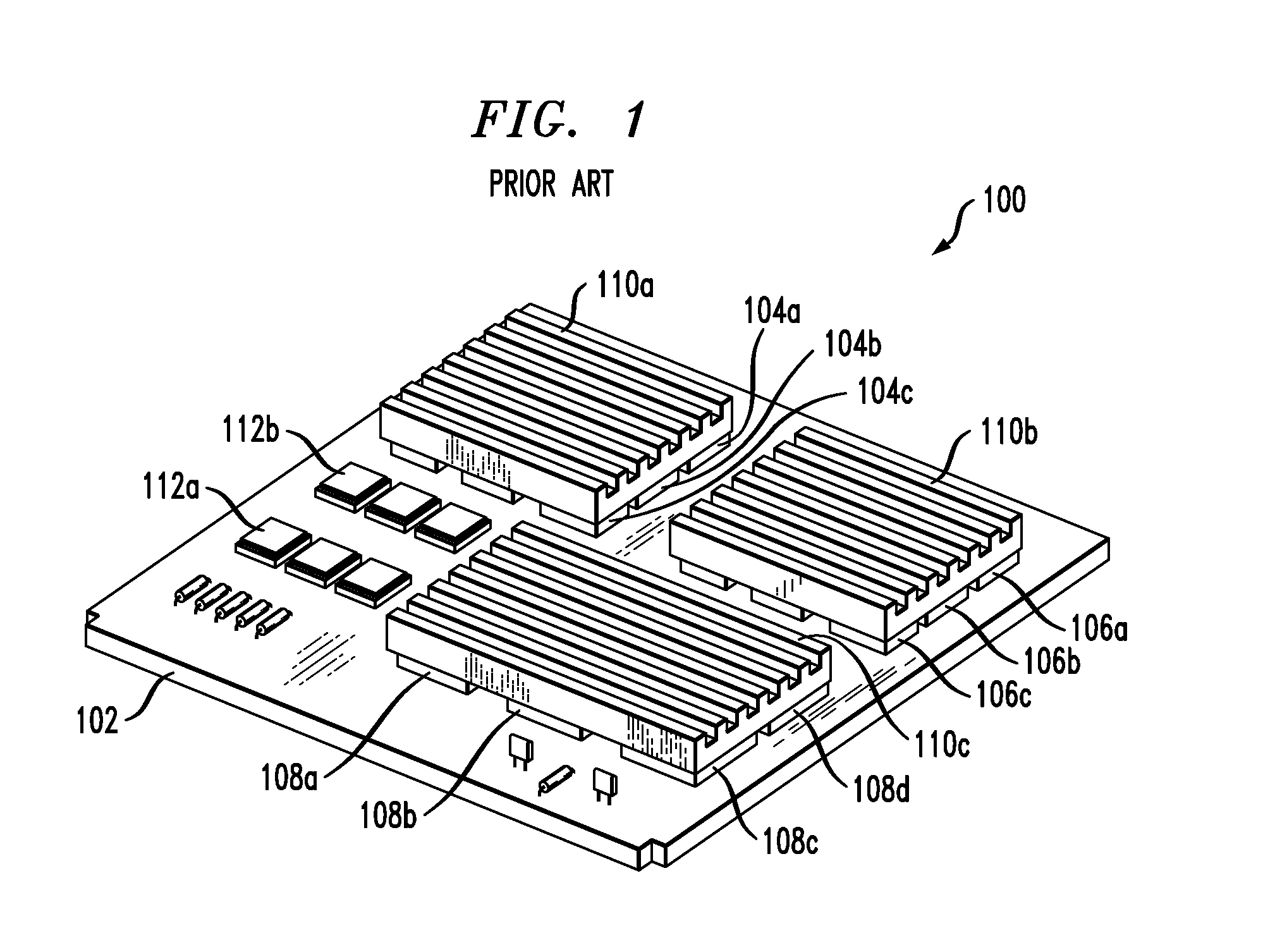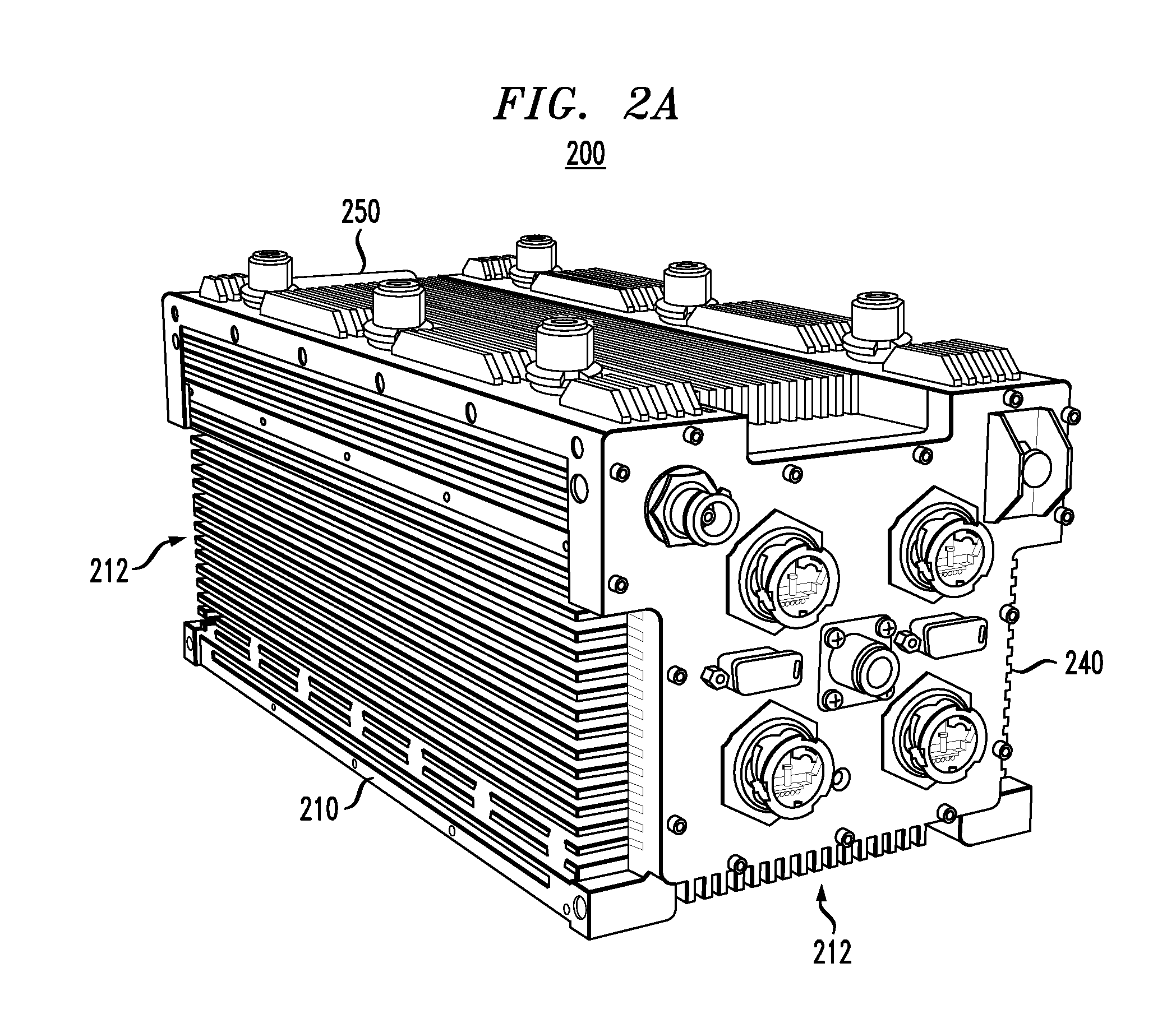Heat-transfer arrangement for enclosed circuit boards
- Summary
- Abstract
- Description
- Claims
- Application Information
AI Technical Summary
Benefits of technology
Problems solved by technology
Method used
Image
Examples
Embodiment Construction
[0015]FIG. 1 shows a three-dimensional perspective view of a circuit board 100 having attached thereto three prior-art heat sinks 110a-c. More specifically, circuit board 100 comprises a plurality of electronic devices, e.g., integrated circuits, mounted on an epoxy-composite base board (e.g., printed wiring board, PWB) 102. Each heat sink 110 is attached to a corresponding group of devices, with all devices within the group preferably having similar shapes and dimensions. For example, heat sink 110a is attached to a group having nine devices 104; heat sink 110b is attached to a group having nine devices 106; and heat sink 110c is attached to a group having six devices 108. In addition, a heat sink similar to heat sink 110 can be attached to each individual heat-generating device, e.g., integrated circuit 112.
[0016]Each heat sink 110 is fabricated of a material having good thermal conductivity, e.g., aluminum or copper, and has the shape of a plate with fins extending from one side ...
PUM
 Login to View More
Login to View More Abstract
Description
Claims
Application Information
 Login to View More
Login to View More - R&D
- Intellectual Property
- Life Sciences
- Materials
- Tech Scout
- Unparalleled Data Quality
- Higher Quality Content
- 60% Fewer Hallucinations
Browse by: Latest US Patents, China's latest patents, Technical Efficacy Thesaurus, Application Domain, Technology Topic, Popular Technical Reports.
© 2025 PatSnap. All rights reserved.Legal|Privacy policy|Modern Slavery Act Transparency Statement|Sitemap|About US| Contact US: help@patsnap.com



